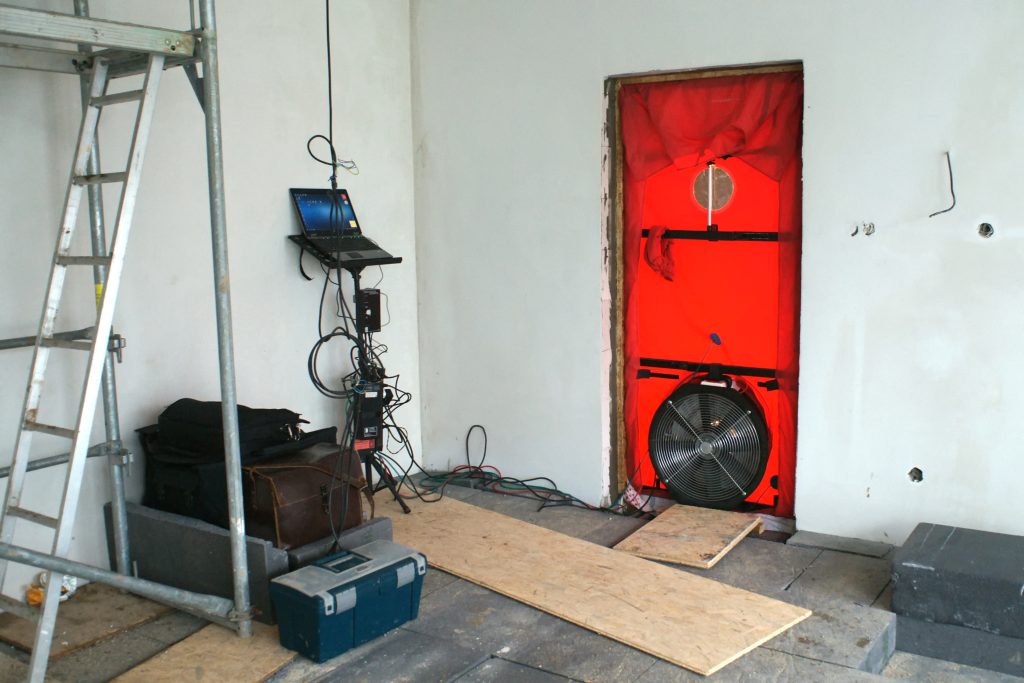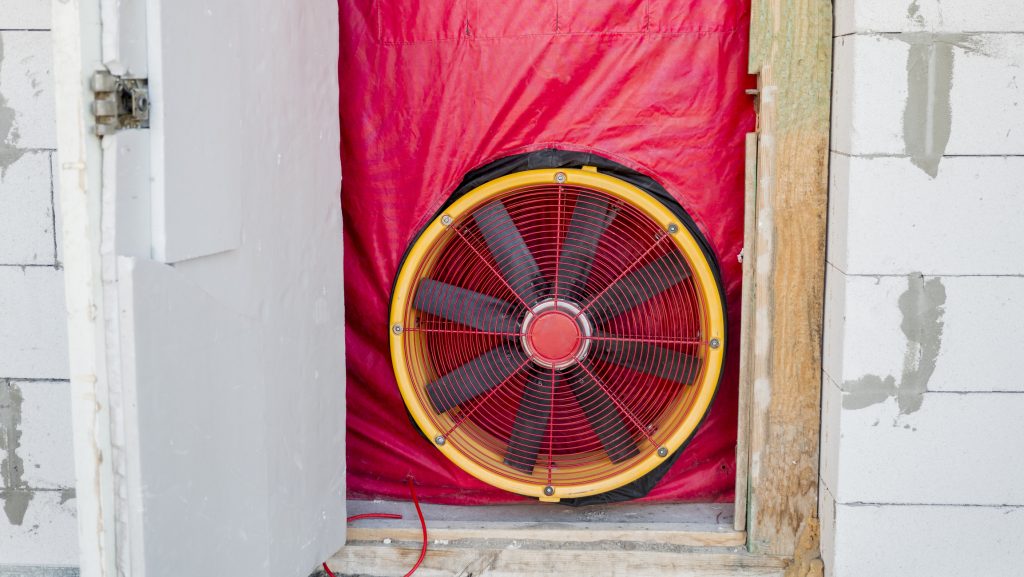
Air Tightness Testing
Air tightness testing, sometimes referred to as air leakage, air infiltration, or air permeability testing, measures the amount of air that leaks out of a structure per hour per square meter of its exterior (m3/hr.m2) in accordance with Part L of the structure Regulations.
Schedule an Air Test
Importance and Benefits of Air Tightness Testing

Air tightness testing, sometimes referred to as air leakage testing, air infiltration assessment, or an air permeability test, measures the amount of air that leaks out of a building per hour per square metre of its exterior (m3/hr.m2) in accordance with Part L of the Building Regulations—Conservation of Fuel and Power Approved Document L. Volume 1 of Part L applies to residential buildings, and volume 2 applies to commercial buildings.
Ensuring that buildings are well sealed when needed helps minimise draughts and heat loss and improve energy efficiency.
Part L of the building regulations was introduced in 2002 and has since been amended several times, with the latest version being enforced from 2023. It sets out the requirements for improved energy efficiency measures in modern buildings, including air tightness to minimise heat loss, along with other requirements for sufficient insulation, efficient heating, lighting, renewable energy, and more.
Compliance with Part L is now a mandatory requirement for all new-build properties in England & Wales, including commercial and residential, as well as buildings undergoing significant renovation, change of use or extension.
As part of demonstrating compliance with Part L, the air tightness of a building must be tested and proven to be within acceptable levels.
Ventilation and airtightness are important elements of a building’s design and finish to ensure controlled airflow and prevent unwanted heat loss and condensation. Gaps, poor seals between building elements, and unintentional openings in a building’s structure can all lead to an uncontrolled flow of air out of and into a building. Breaches in the building envelope’s fabric can let cold air in, creating a heating burden or allowing heated air to escape, increasing heating costs and carbon dioxide emissions.
Other elements of Part L assessment and compliance can be demonstrated through SAP calculations.
Methods and Equipment Used in Air Tightness Testing
Air tightness testing, air leakage testing or air permeability testing measures the amount of air that leaks out of a building structure. The building is sealed, and a low pressure (typically 50 pa) is applied to the building using a blower door fan. Measurements are taken to assess pressure difference against test reference pressure differentials.
Pressure differentials are assessed using a prescribed approach, and analysis software helps compare the air test results with the building envelope area to establish the air leakage rate through the building’s fabric. The air leakage test results are compared with the requirements of Part L, and if successful, a test certificate is issued to demonstrate that the building meets the required air tightness target.
The current pass benchmark is a maximum of 8m3/h/m2 @50pa—that is 8 metres cubed of air leakage per hour per square metre of envelope, including outer floor, wall, and roof area, at a pressure of 50 pascals. Assessors may reduce the required pass mark based on building type, arrangement, or SAP calculation accordingly.
If the building fails, it’s often possible to identify the reason for the higher air permeability rate in consultation with your assessor. Measures to prevent unwanted air flow and leakage can then be implemented, along with any other remedial requirements, and the air pressure testing can be repeated.
It’s important that tests are carried out at the appropriate stage of the project and in good time to allow any remedial work to be easily and cost-effectively conducted, allowing the dwelling to pass and be certified on completion.
Legal Requirements and Compliance Related to Air Leakage Testing - England and Wales
What is meant by air tightness?
Air tightness is a measure of the overall sealing of a building and its ability to retain the air within it and prevent air leakage out of and into the property. This is an essential indication of heat loss and efficiency (along with high-performance windows, insulation, etc.)
Do I need a building air tightness test?
You need an air tightness or air permeability test for any new building and any significantly refurbished or extended building. Contact our specialists for further guidance on whether you need an air tightness test.
What is good air tightness?
A good air tightness depends on the type of building, its size and arrangement. A good maximum is 10m3/h/m2 at 50pa – often this needs to be bettered.
Testing for air permeability is a step in the construction process that is frequently missed. It is applicable to practically all newly constructed homes and offices, and part of obtaining building control approval requires holding a certificate from an accredited compliance consultants like Build Envelope.
Build Envelope are accredited building testing and assessors for building regulations approval. Our experts provide friendly guidance and a host of services to help demonstrate your building compliance with regulations.
We always make the testing process hassle free, so you can rest assured we are able to deal with your needs effectively.
Have you got a project in mind?
Get in Touch
Email Us
info@buildenvelope.co.ukCall Us
01386 365145/* -- The root styles must go in the element of the structure with the name "Form". --*/
.hero-24__form{
/* Styles applied to all checkboxes */
& .options-wrapper{
& li{
display: flex;
align-items: start;
flex-wrap:nowrap;
}
/* Unique styles for privacy policy checkboxes */
& label[for="form-field-vmwaoi-0"] {
font-size: var(--text-s);
line-height: 100%;
/* Color link */
& a{
color: var(--primary)
}
}
}
}For more information on Air Tightness Testing, here’s some useful links:
Planning Portal Part L Guidance
The Building Regulations etc. (Amendment) (England) Regulations 2021
SEO by Northern Shoal Consulting
